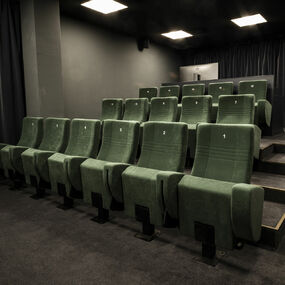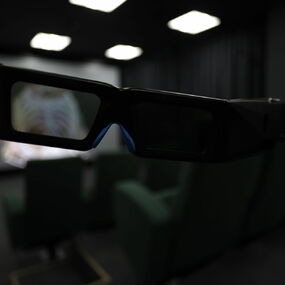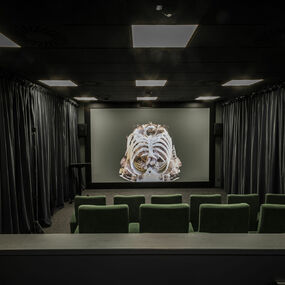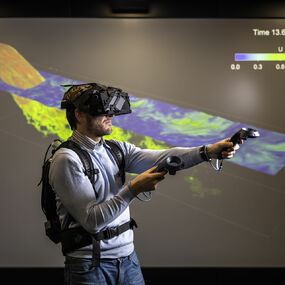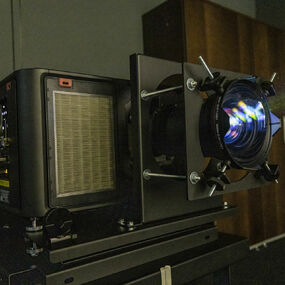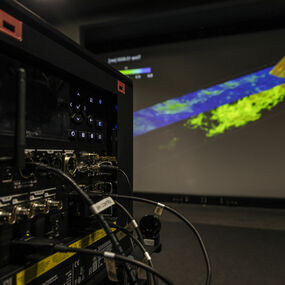At the end of last year, IT4Innovations launched the Visualization and Virtual Reality Lab (VVR Lab), which will support the supercomputing infrastructure, and is to be used to visualize 3D content using the latest available technology in large-scale 3D projection and virtual reality devices. Among other roles, the lab will support in-house research carried out at IT4Innovations and at VSB - Technical University of Ostrava.
In particular, the lab will find its use in visualizing large-scale scientific calculations, such as projects in engineering, nanotechnology, material design, and many others. Moreover, it will also be used in cooperation with industry partners, in particular to visualize the results of joint research, verify prototypes, and present products. Last but not least, it can also help with educational activities such as teaching anatomy in 3D, demonstrating product manufacturing processes, and as a general simulation training device.
Lab equipment description
The solid 3D projection wall in the projection room is illuminated by Barco‘s top-of-the-line 3D laser cinema projector with high 4K resolution. The projector is installed behind the wall so that users examining the results presented can move in the immediate proximity of the projection screen without casting a shadow on it, as they would with a forward projection. The image projected by the projector is generated by a computing station directly installed in the projection room or by a computing cluster in the IT4Innovations data room. The newly built 100 Gb/s Ethernet line between the data room and the VVR Lab is designed to transmit data and images directly from the IT4Innovations supercomputers. The image generating stations for individual VR glasses are also connected to this line.
The VR simulator area is designed to accommodate the cooperation of up to 4 people in virtual reality. It is based on a trio of wireless HTC Vive Pro glasses with 2K resolution for each eye. With these glasses, the image is transmitted from the rendering station by wireless technology, and the user‘s movement is not restricted by cables. Another important feature is the VR XTAL glasses from the Czech VRgineers company with high 4K resolution for each eye. Even in the case of these glasses, there is no restriction on cable movement, as the image is generated by a special VR backpack (i.e., a computer on the back). The rendering stations for VR glasses are located directly in the lab and are also connected by a fast 100 Gb/s Ethernet line to the data room, so that the image can be directly generated on the IT4Innovations supercomputers.
THE VVR LAB IS DIVIDED INTO:
- a projection room with an auditorium for 16 spectators with a 3D projection wall with 4K resolution, rear projection, and 5.1 surround sound
- an area for a virtual reality simulator created using four wireless VR glasses
The two units can work independently of each other as they are installed in different rooms. Thus they support the work of two independent groups, through their connectivity to the supercomputers.

